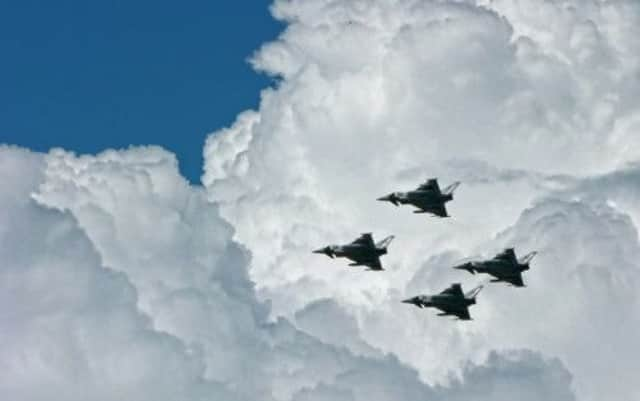Scottish independence: army make-up revealed


The independence blueprint shows that a Scottish Defence Force will cost £2.5 billion a year and will be built up in three stages over the decade following the creation of an independent state.
But opponents said that the defence section of the paper left too many questions unanswered on areas such as funding, acquiring equipment and recruitment.
Advertisement
Hide AdAdvertisement
Hide AdThe document, based on military advice, revealed that an initial force will be set up largely based on equipment the Scottish Government hopes it would get as its share of the negotiations with the rest of the UK.
It outlines that Scotland’s priorities would be based on membership of Nato and getting rid of Trident by 2021.
However, in a fig leaf to future Nato allies, it says that the Scottish Government would allow them to dock vessels in Scotland without asking if they are carrying nuclear weapons.
While Scottish troops would be involved in peacekeeping, they would largely be focused on domestic duties and defending the “high north”.
According to the white paper, the navy would have two Type-23 frigates, based at Faslane where the overall military headquarters would also be located.
The frigates would be replaced by four Type-26 frigates in the next decade which the Scottish Government hopes will guarantee shipbuilding jobs on the Clyde. The navy would also include marines, four mine counter-measures vessels, two offshore patrol vessels, four to six patrol boats from the Royal Navy’s current fleet and auxiliary support ships, and would be manned by 2,000 regular and at least 200 reserve personnel.
The army would be based around a deployable brigade of three battalions backed by, among other support units, two light armoured reconnaissance units, two light artillery units, one engineer unit and one aviation unit operating six helicopters, bringing the total to about 3,500 regular and at least 1,200 reserve personnel.
Bases could be shared with the rest of the UK.
The air force would be mostly based in Lossiemouth in Moray with 12 Typhoons possibly increasing to 16 by 2026. It would also have around six Hercules C130J aircraft as well as maritime surveillance aircraft.
Advertisement
Hide AdAdvertisement
Hide AdA source close to Conservative Defence Secretary Philip Hammond described the proposals as “incoherent” and questioned whether it could be funded by a £2.5bn budget. He said: “There is an assumption that they would get certain assets but this would be a matter for negotiation and the rest of the UK may not wish to give them up.”
Analysis by Stuart Crawford: Trident’s the dark shadow hanging over SNP’s plans
SO, WHAT’S new about the SNP’s defence and security plans in the white paper? The answer is not much.
What the paper allows, however, is for defence to be considered in the light of government foreign and security policy. Previously, commentators had to develop their models for an independent Scotland’s defence forces in a foreign policy vacuum.
Now we have that context provided by the party that would lead Scotland out of the UK, and very illuminating it is too. Whilst commentators have generally assumed an independent Scotland’s ambitions would be more regional than global, the white paper suggests otherwise; there is a strong current of wishing to act on the world stage. There is also a blithe assumption throughout that Scotland would be a member of international institutions like the EU and Nato when others are not so sure.
There is now an emerging consensus on how Scotland might organise its own armed forces. At least four major studies have come up with roughly the same blueprint, and the SNP defence policy in the main conforms to it.
Scottish defence forces are likely to be modest in size, to operate mainly within alliances or coalitions, and not attempt to have a full-spectrum capability.
There are some differences in the detail. Why on earth, for example, would Scotland want to have 18 eye-wateringly expensive Typhoon fast jets when as a Nato member it would fall under the Nato air defence umbrella anyway?
Advertisement
Hide AdAdvertisement
Hide AdWould it not make more sense militarily and economically to offer up Lossiemouth as a Nato airbase?
Inevitably, though, when discussing the defence of Scotland, all roads lead back to the nuclear deterrent based on the Clyde. I believe the SNP position on Nato membership and the presence of the Trident missile system at Faslane to be muddled at best and contradictory at worst.
Independent Scotland would wish to be part of Nato. Not to be a member makes no sense.
The pragmatic compromise is for Trident to remain until it is obsolete, say by 2030. This gives the UK time to sort out its successor and Scotland a huge bargaining chip in negotiations.
Now, that’s a hard sell for the SNP leadership, but it knows it makes sense.
• Stuart Crawford is a defence commentator and former army officer.
SEE ALSO: